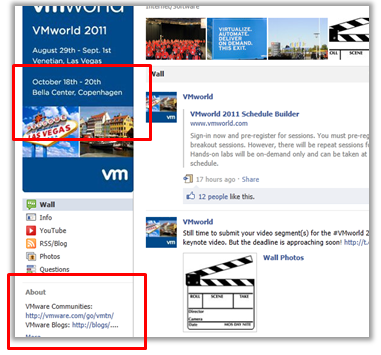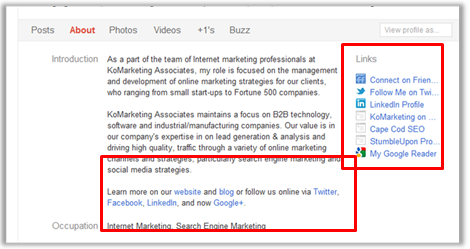While there is no shortage of news and analysis on Google+, how this social network fits into the B2B marketing mix remains unclear. Even as social media adoption soars, B2B organizations face difficulty incorporating social media, tactically and strategically. A recent study conducted by Forrester Consulting found social media at the core of marketing initiatives for only 20 percent of participants surveyed.
In our company’s experience, of all social media classification types (blogging, social news, etc), social networking sites (beyond LinkedIn) remains the most challenging for the B2B organization to “get” the value. The MarketingSherpa chart below supports this notion, visualizing how the most difficult (yet effective) tactics involve the networking aspect of social media.

Yet B2B marketers still place Facebook as an important platform, because business decision makers are there, even if they aren’t in a traditional “buying mode.” The shift in online behavior to social networking represents an important change in how we search, discover, and then share information.
This article isn’t meant to convert your organization into becoming the next social media evangelist, but illustrate how and why it can become an essential part of the search engine marketing mix overall and to provide practical first steps to incorporating social networking into the B2B marketing strategy.
The Evolution of Search
Above all else, search engines (especially Google and Bing) realize the impact social signals have on how users will discover new content online. As more people connect to others, connect to their interests, and connect to companies playing well in social networks, it impacts how they will want to find new information.
Some powerful points of information to consider:
- Google’s +1 button is reportedly being served 2.3 billion times a day.
- Google+ exceeded 10 million users in two weeks. By comparison, it took Foursquare two years to surpass that milestone.
- Seventy-three percent of Americans with an Internet connection visit Facebook each month
Bottom-line: social networks represent a significant component of our online behavior, in the network and in relation to how we want to share information.
In addition, Facebook and Google are becoming intertwined in our everyday lives, Gmail, Group Collaboration, Events, etc. Google in particular has the existing connectivity to bring a larger audience into Google+ (and position the platform as a true player in social networking), regardless of whether they intended to be there purposefully.
But from the search perspective only, the individual’s social graph will have a greater impact on individual (and in turn aggregate) search engine results moving forward. The connection on why B2B companies invested in SEO need to look to social networks is that simple.
The New Link Building Strategy?
As indicated in a recent MarketingSherpa blog post, two important points from those surveyed in the 2012 SEO Benchmarking report include:
- Content creation is the most effective SEO tactic (see chart below).
- External link building is the most difficult SEO tactic to execute.

An effective social network provides the potential for “free” marketing research on what potential customers really want. “Listening” effectively to one’s social network is the first step to uncovering the type of content that will resonate with a target market and for which an SEO keyword strategy can be applied.
Social networking and social media make the distribution and ability to share and link to goodcontent that much easier. If the right networks are in place, sharing content becomes more effective, and others sharing (and linking) to good content becomes more likely as well.
Social Networking Steps for B2B Organizations
To get organizations involved in social networking, the following steps need to be considered.
1. Enlist Company Team Members
Having individual representatives supporting the overall organizational effort adds significant value to a social networking strategy. However, because social networking is largely a personal initiative, not every employee will feel comfortable sharing their social network across business lines.
The right team members must be willing to share and advocate the organization, which means their entire network (at least in places like Twitter and Facebook) will see these updates. It’s worth acknowledging that Google+ might make this more comfortable given the ability to broadcast messages to specific circles in one’s community.
2. Establish Complete Company Profiles
If nothing else, develop a completed company profile in applicable social networking communities. This means leveraging as many of the field of information and sections of the profile available.
Don’t forget to include images, video, and opportunities to integrate business specific initiatives. Examples of this include:
- Custom landing pages in Facebook (the Static iFrame App is a great resource for handling this) for specific Welcome Messages or product information.

- Custom background images/messaging for Twitter.

Even though specific business profile enhancements appear to be on the way later this year, B2B marketers should no doubt be exploring Google+ at the personal level, in consideration for ways to integrate business specific initiatives there as well.
3. Cross-Link and Draw Awareness
Once profiles are set, it’s imperative to place content and information in easily visible locations (in addition to traditional status updates). Examples of places to integrate new cross-links and information:
- Facebook “basic” information and website links, as well as callout information in the page icon and “about” section.

- Rotate and change the URL information in the company (and individual) Twitter bio.
- If you’re on Google Plus, add and consider rotating relevant links in your “Links” section and directly in the profile introduction.

Where to Go From Here
To truly unlock the value of social networking sites, quality participation is the key component. And even though there may be an urge to jump right and update, listening and evaluation should happen first, followed by a growing progression of communication strategies. Just like traditional relationships, there is a building process that happens over time.
What are your thoughts? Has your presence in social networking sites had a positive impact for your SEO strategy, in the form of content generation and link acquisition? I would love to read your thoughts and opinions via the comments below.





